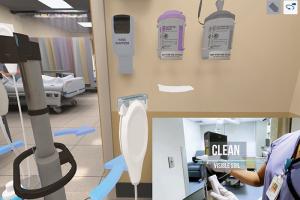Wearable devices call for investment in wireless infrastructure
When it comes to patient care, detailed monitoring of a patient’s condition is necessary to not only keep the patient safe but to also properly diagnose the patient’s condition. Patient monitoring via medical telemetry plays a profoundly important role in the care of patients.
Studies demonstrate that patients with cardiac risk factors who are monitored have significantly better outcomes than those who are unmonitored. This is true even in severe cases of cardiac arrest, where patient monitoring more than doubles the chance of survival. Today the growing sophistication of medical telemetry is enabling these systems to not only alert staff during a cardiac event, but also detect trends that can warn clinicians well in advance of trouble. Through increasingly sophisticated software analytics, patient monitoring is rapidly expanding its ability to save lives.
Another area that has the potential to increase the demand for wireless services within health care are wearable devices. While most health care systems do not currently have a way to collect and use data from these wearable devices, it’s easy to recognize the advantage that a plethora of real-time data collected from these devices can provide versus the annual one-time data collected through a visit to the doctor’s office.
Additionally, wearable devices can also help to reduce and/or eliminate “white-coat syndrome,” which is the term used to describe a patient whose vitals, such as blood pressure, are abnormal due to anxiety when visiting a doctor’s office but are otherwise within a healthy range when at home. Real-time data from wearable devices would not only provide more accurate data but could also be used to establish individual patient benchmarking. Being able to personalize an individual’s true “normal” could reduce potential noise from data collected at the doctor’s office.
While personal health monitoring outside of a hospital is still an emerging field and the monitoring of personal wearable devices is even less of a reality at this time, preparing for a future when wireless medical telemetry systems will be able to monitor patients while they live their daily lives is not a far-fetched sci-fi future, but rather an eventuality for which health care organizations should prepare.




